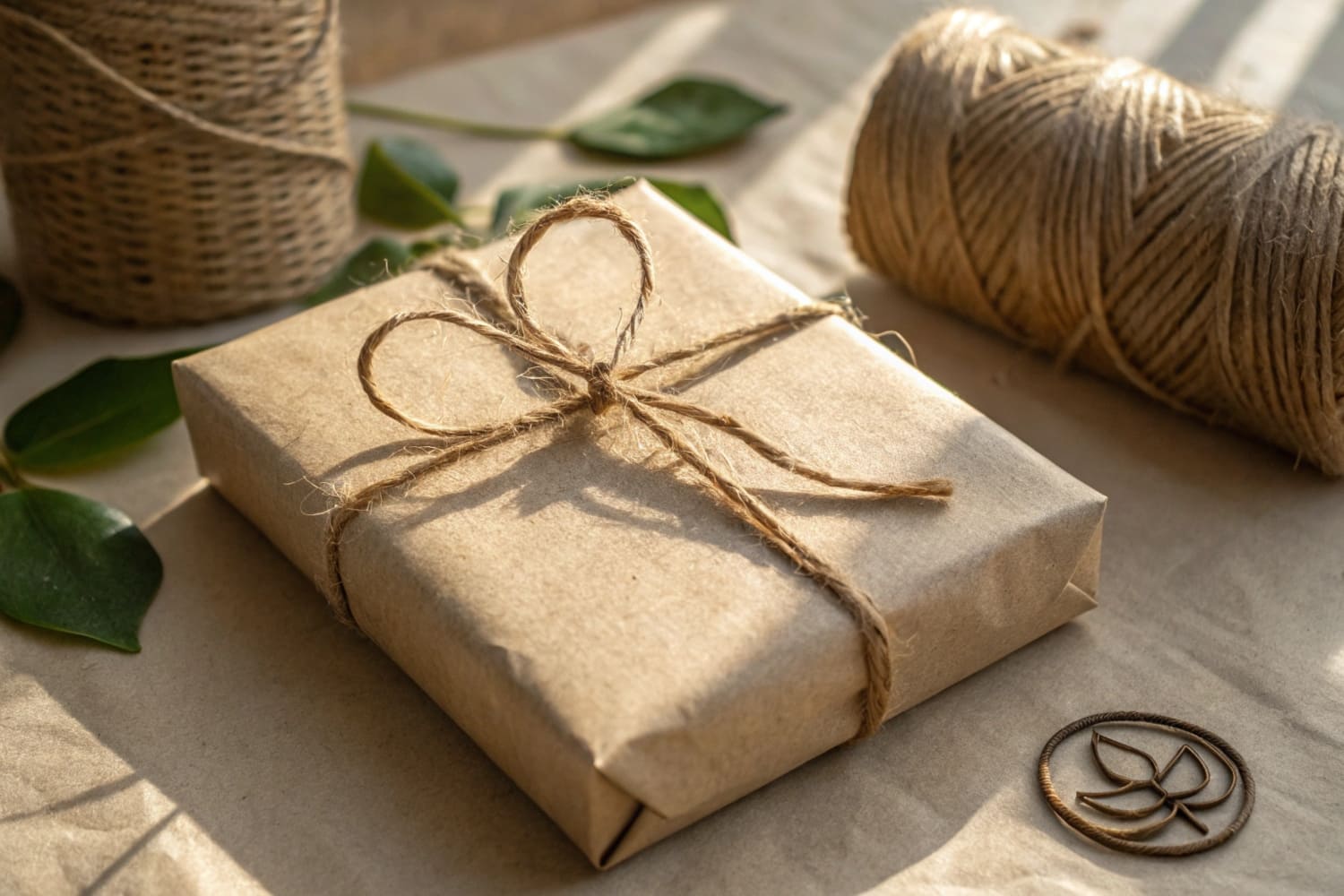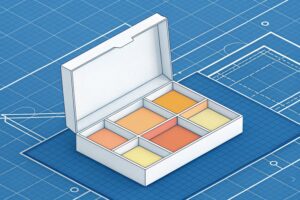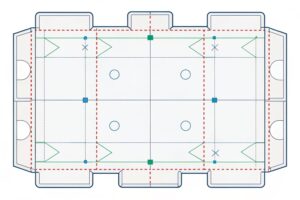I see brands cut costs and waste. I also see buyers want strong, simple, and green packaging. Kraft paper sits right in the middle. It solves pain points without drama.
Kraft paper is used to wrap products, protect during shipping, line boxes, make mailers, form shopping bags, and build display-ready packs because it is strong, printable, recyclable, and cost-effective.
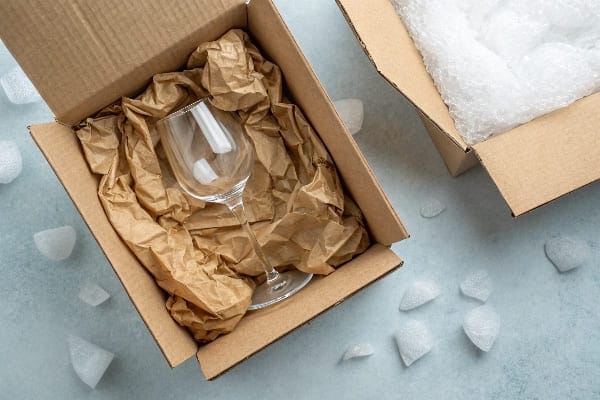
I run PopDisplay in Shenzhen. I make cardboard displays for global launches. I use kraft liners daily. I choose them when I need strength, clean printing, fast lead time, and easy recycling. I share what works so you can move faster.
How is kraft paper used for packaging?
Shops want fewer damages and cleaner shelves. Warehouses want faster packing and less filler. Marketing wants print that matches brand colors. I align these needs with one substrate.
Kraft paper serves as wrap, void fill, interleaving sheets, box liners, bags, envelopes, tape backers, and display skins because it offers high tear resistance, good printability, and easy recycling.

Where kraft1 fits in the flow
I split usage by stage. Upstream, teams need bulk rolls for converting. Midstream, lines need speed and repeatability. Downstream, stores need clean looks and simple disposal. I learned this in a holiday rush for a North American retailer. We replaced plastic air pillows with 70–90 gsm kraft. Damages dropped. Pack speed rose. The aisle looked tidy. The buyer reordered within two weeks.
Typical use-cases
— Wrapping: Furniture, books, tools. It resists scuffs.
— Void fill: Fan-folded or crinkled sheets pad gaps.
— Interleaving: Sheets between items stop abrasion.
— Box liners: Hide flutes and raise perceived quality.
— Mailer construction: Honeycomb kraft mailers replace bubble.
— Bags and SOS sacks: Retail and food service use them daily.
— Display skins: Printed top sheet laminated to corrugated.
Weight and finish cheatsheet
| Task | Common Basis Weight (gsm) | Finish | Why it works |
|---|---|---|---|
| Wrap small goods | 40–60 | Natural | Flexible and cheap |
| Void fill | 50–70 | Natural/rec. | Good crumple memory |
| Interleave sheets | 60–80 | Natural | Smooth enough for parts |
| Box liners | 70–100 | Bleached/Clay | Clean interior look |
| Retail bags | 80–120 | Natural/Bleached | Stiff, holds creases |
| Display skins | 120–200 | Coated/White Top | Sharp print and stiffness |
I keep specs simple. I test tear strength, ring crush with the board, and ink holdout. If the product is heavy or has sharp edges, I step up weight or add wet-strength. If the client needs premium color, I move to white-top kraft.
What is kraft paper box packaging?
Many brands ask for “kraft boxes.” They want a natural look and strong structure. They also want fast setup on retail floors.
Kraft paper box packaging refers to cartons and corrugated boxes made with kraft liners or kraft paperboard, offering strength, a natural look, clean printing, and easy recycling for shipping and retail display.
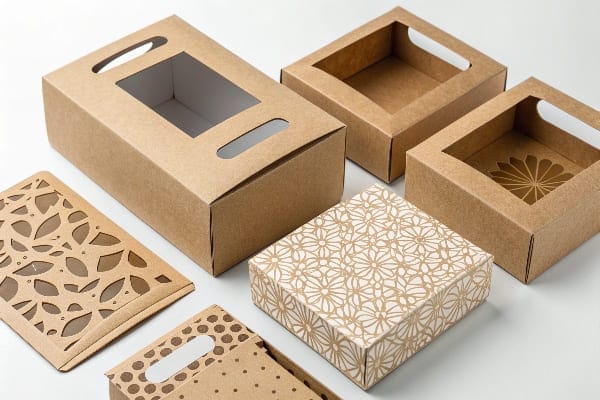
What sits inside a “kraft box2”
A kraft box can be a simple paperboard carton or a corrugated shipper. I guide buyers through three layers: outer liner, medium, and inner liner. For display packaging3, I use a white-top kraft for print outside and a natural kraft inside. This mix looks premium and still feels honest. When we built PDQ trays for a sporting goods launch, the kraft outside matched the hunter’s palette. The display felt authentic and rugged. Sales teams told me customers picked it up more often.
Structures you will see
— Folding carton (SBS/Kraft-back): Lighter, for shelf-ready goods.
— Single-wall corrugated (B-flute, E-flute): Common for e-commerce.
— Double-wall corrugated: For heavy or long-haul freight.
— Display-ready packaging (SRP/PDQ): Ships closed, opens to sell.
Quick spec matrix
| Box Type | Board | Best For | Notes |
|---|---|---|---|
| Folding carton | 230–350 gsm kraft-back | Cosmetics, small tools | Smooth print, low weight |
| E/B-flute shipper | Kraft liner + medium | E-com general | Good crush resistance |
| Double-wall | Kraft liner x2 | Heavy gear | Strong stacking |
| SRP/PDQ | White-top kraft + E-flute | Shelf displays | Opens fast, prints well |
I validate with transit tests. I run drop, vibration, and compression. I use water-based coatings to resist scuffs. I add easy-open zips and tear strips so staff set up fast. A fast setup saves labor and wins the reorder.
Is kraft paper good for packing?
Buyers ask this when they weigh plastic vs paper. They worry about strength and cost. They also watch sustainability goals.
Yes. Kraft paper is good for packing because it balances strength, cost, speed, and recyclability, and it works across wrapping, void fill, mailers, and box liners with reliable supply and easy disposal.

Where kraft wins and where it does not
Kraft wins when you need broad usability. It resists tears better than many recycled-only papers. It packs fast and needs no special tools. It prints clean with water-based inks. It recycles in most curbside systems. I saw this during a crossbow accessory rollout for a U.S. chain. We moved from foam and film to kraft pads and SRP trays. Return rates fell. Unboxing looked clean. The brand’s sustainability note on the flap got positive feedback.
Kraft is not perfect. In very wet supply chains, you need coatings or films. For very delicate items, you might still need foam corners. For long outdoor exposure, use wet-strength4 or barrier liners.
Pros and cons overview
| Factor | Kraft Paper5 | Notes |
|---|---|---|
| Strength-to-weight | High | Good tear resistance |
| Cost | Competitive | Broad supply base |
| Speed | Fast | Simple packing flow |
| Good | Best with white-top | |
| Recyclability | High | Clear consumer message |
| Moisture | Moderate | Add coating if needed |
Decision guide
— Choose 50–70 gsm for void fill and light wrap.
— Choose 70–100 gsm for liners and mailers.
— Choose 120+ gsm or white-top for retail print.
— Add wet-strength for cold chain or humidity.
I keep trials short. I ship test kits with two weights and two finishes. Teams pick by feel. This closes projects faster and reduces risk.
What is craft paper used for?
People often mix “craft” and “kraft.” In packaging, most mean “kraft.” Yet some teams use “craft paper” to mean any paper for making or prototyping.
Craft paper is used for DIY projects, pattern making, dunnage, stencils, sample mockups, kids’ art, and light wrapping; in packaging teams it often refers to kraft paper rolls used for quick prototypes.

How I separate the terms in real work
I use kraft6 when I talk about strength and liners. I use craft7 when I talk about making, sketching, or fast mockups. On our design floor, my engineers keep both. They sketch dielines on craft paper. They cut and fold to test size and reach. When the shape works, they move to real board with a kraft liner. This speed saves days. It also reduces waste. In a tight launch window for a Canadian retailer, this method kept us on schedule while the client tweaked artwork.
Typical applications
| Term | Common Uses | Material Notes |
|---|---|---|
| Kraft paper | Wrapping, void fill, liners, bags, SRP | Strong, brown or white-top |
| Craft paper | Patterns, stencils, kids’ art, mockups | Any cheap paper for making |
How teams should buy
— For packaging lines, buy kraft in rolls and fanfold.
— For studios, buy craft sheets and cutting tools.
— For retail visuals, choose white-top kraft for color accuracy.
— For impact, add clear brand marks with water-based ink.
I keep language simple in quotes and POs. I write “kraft” for supply items and “craft” for studio stock. This small step prevents mix-ups and delays.
Conclusion
Kraft paper keeps packaging simple, strong, and recyclable. It works in shipping, retail, and displays. Choose weight by task, add coatings only when needed, and test fast with real loads.
Explore the advantages of kraft paper in packaging, including its durability and eco-friendliness, which can enhance your product’s appeal. ↩
Explore this link to understand the versatility and applications of kraft boxes in packaging. ↩
Learn about display packaging to see how it enhances product visibility and sales. ↩
Learn about wet-strength paper, its properties, and how it enhances packaging performance in humid conditions. ↩
Explore the advantages of Kraft Paper in packaging, including its strength, recyclability, and cost-effectiveness. ↩
Explore this link to understand the versatile applications of kraft paper in packaging, enhancing your knowledge on its benefits. ↩
Discover how craft paper can elevate your design projects with creative applications and tips for effective use. ↩

